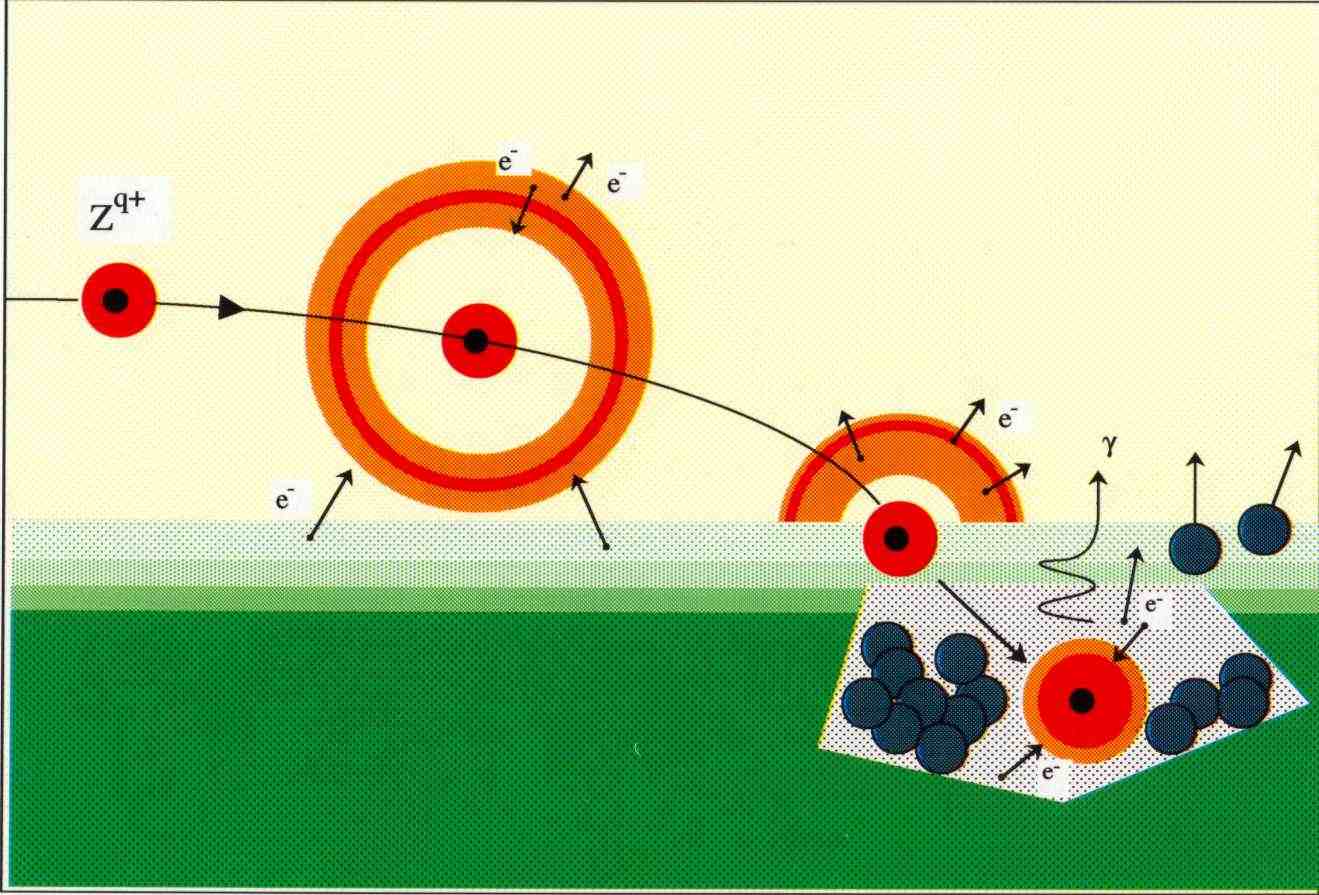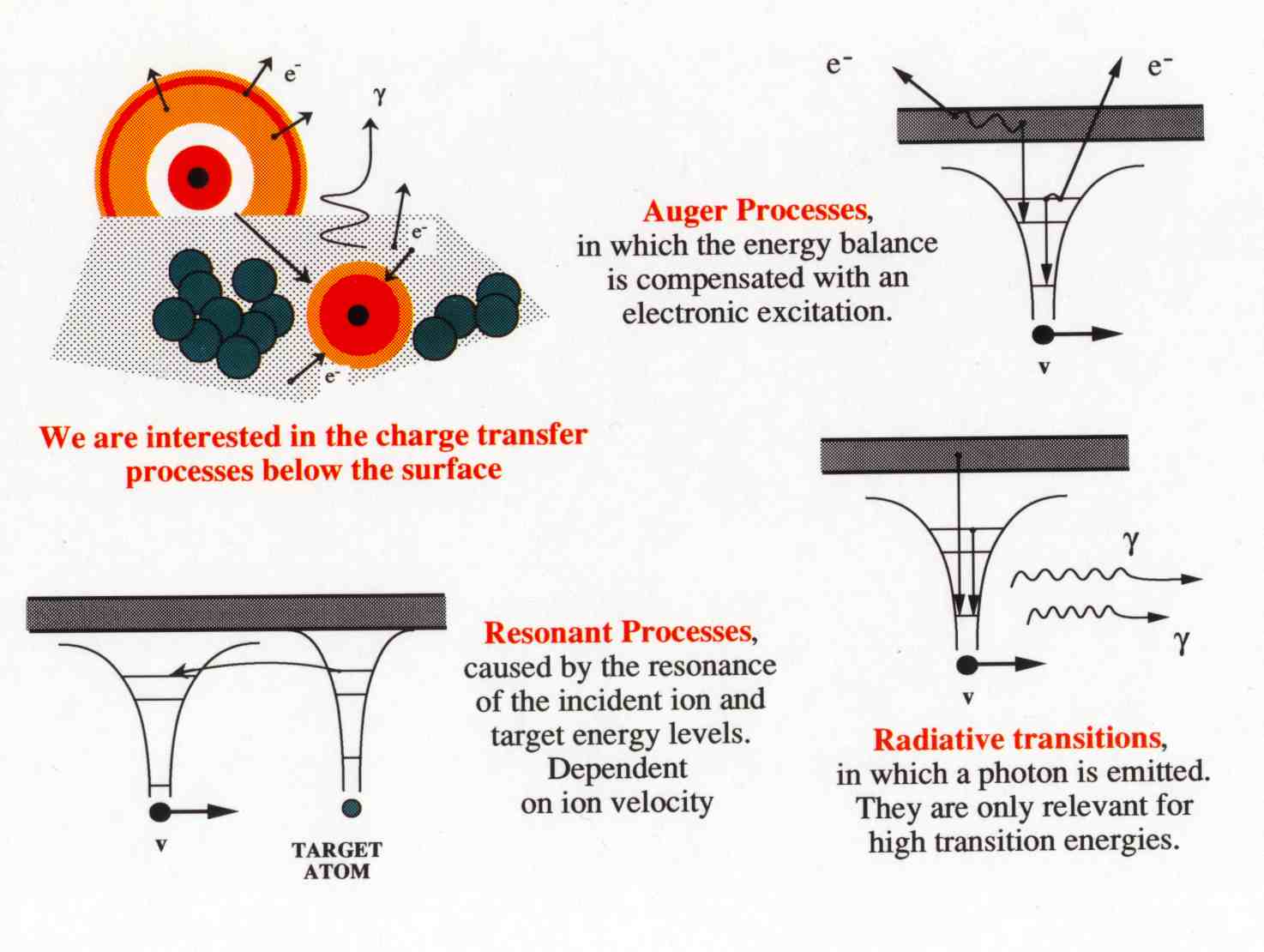
We evaluate quantitatively the role of
Auger
and
radiative
recombination processes in the neutralization of
slow multicharged ions in metals
. The strong perturbation
of the valence-band electrons by the ion requires
a
non-linear treatment
which is carried out
using Density Functional Theory. We find that this
perturbation creates an electronic cloud around
the ion which has an atomic-like character.
We show that it is this phenomenon which determines
the order of magnitude of the transition rates,
as illustrated by the evaluation of
Auger and radiative rates for
Ne
and
Ar
ions.

Various processes have been proposed for the neutralization
of slow multicharged ions travelling through metals.
Quasiresonant capture
from metal core levels
and
Auger transitions
are the more effective ones
in filling the ion inner shells.
Radiative recombination
becomes also
relevant for increasing transition
energies (i.e. increasing ion charges).
Quasiresonant capture has been studied both theoretically
and experimentally in the last few years.
In this work we focus our attention
on Auger and radiative transitions. The latter
processes are directly related to experimental observables
(electron and X-ray spectra). Furthermore,
the neutralization and relaxation time scale
determines the depth at which the potential energy of the
incoming ion is deposited.

As the ion approaches and enters the solid,
the metal is strongly polarized.
The valence-band electrons are much affected by the ion
perturbation and rapidly rearrange to
screen
the long-range Coulomb potential of the ion,
ensuring charge neutrality at large distances.
The time scale over which this rearrangement
takes place is much smaller than the neutralization
time. On the one hand, this reduction in the range of the electron-ion
interaction potential makes the number of bound
states on the ion finite. On the other hand, the charge cloud
accumulated around the ion and
following its motion corresponds to a modification
of the electronic state of the metal in that region
of space which is crucial for the determination
of recombination processes.
A slow highly-charged ion strongly
perturbs a metal. The piling-up of charge
in the vicinity of the ion,
particularly in the spatial region within a few atomic units
around the nucleus, requires a non-linear description of
the electronic state modification.
In this work we use Density Functional Theory to
obtain the induced electronic density around the ion
self-consistently. The bound and continuum Kohn-Sham
orbitals thus account for the charge displacement
and significantly differ from the
simpler approximations already mentioned. By using
the latter orbitals in the calculation
of Auger and radiative transition rates, we are able
to account for
target distortion
in the evaluation of the neutralization processes.
For a detailed understanding of
the collision dynamics of the system, it is necessary to
know the time scales of the radiative and non-radiative
processes. However, their rates
are not directly accessible experimentally.
Therefore, in the interpretation of experimental
spectra, they are usually taken
from calculations for isolated atoms
or used
as fitting parameters in cascade models.
Our objective is to provide theoretical
values that may be used as input
to the cascade models.
These rates may be in error by orders of magnitude when
target distortion by the projectile is not
accounted for.